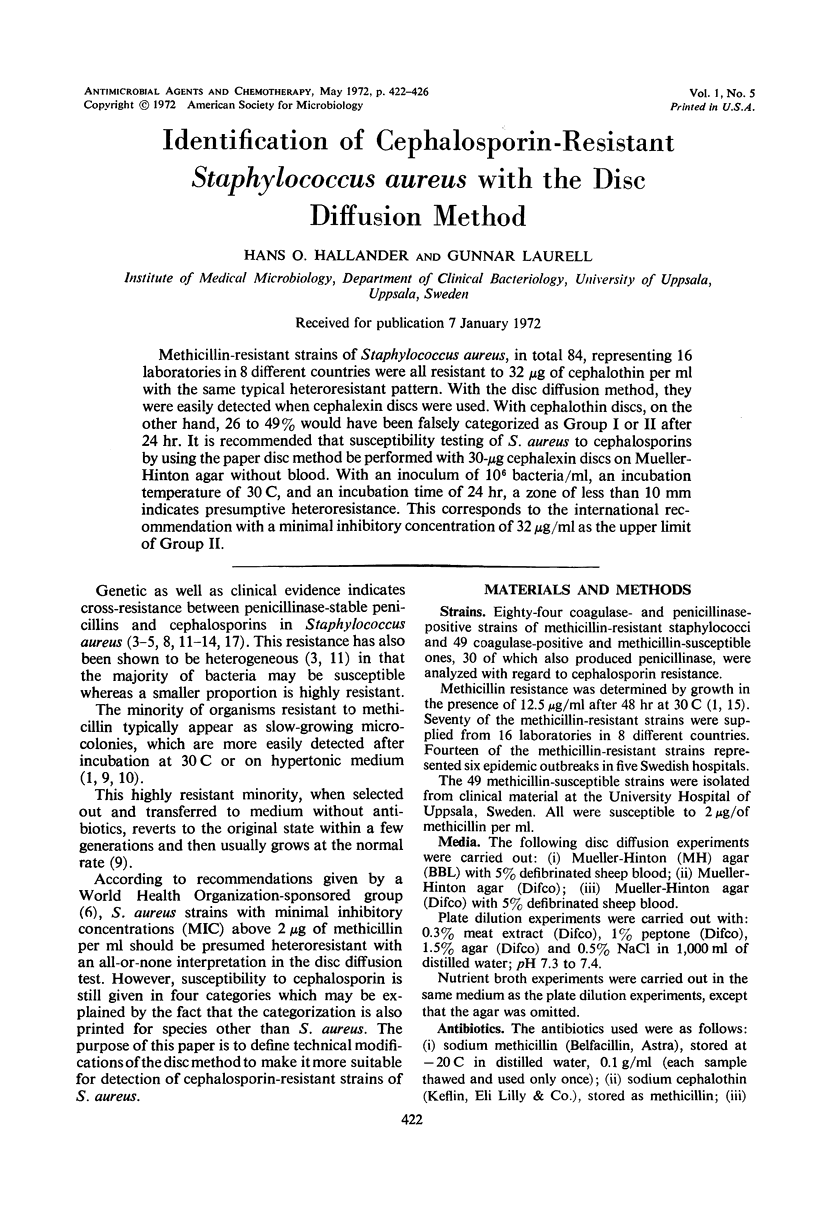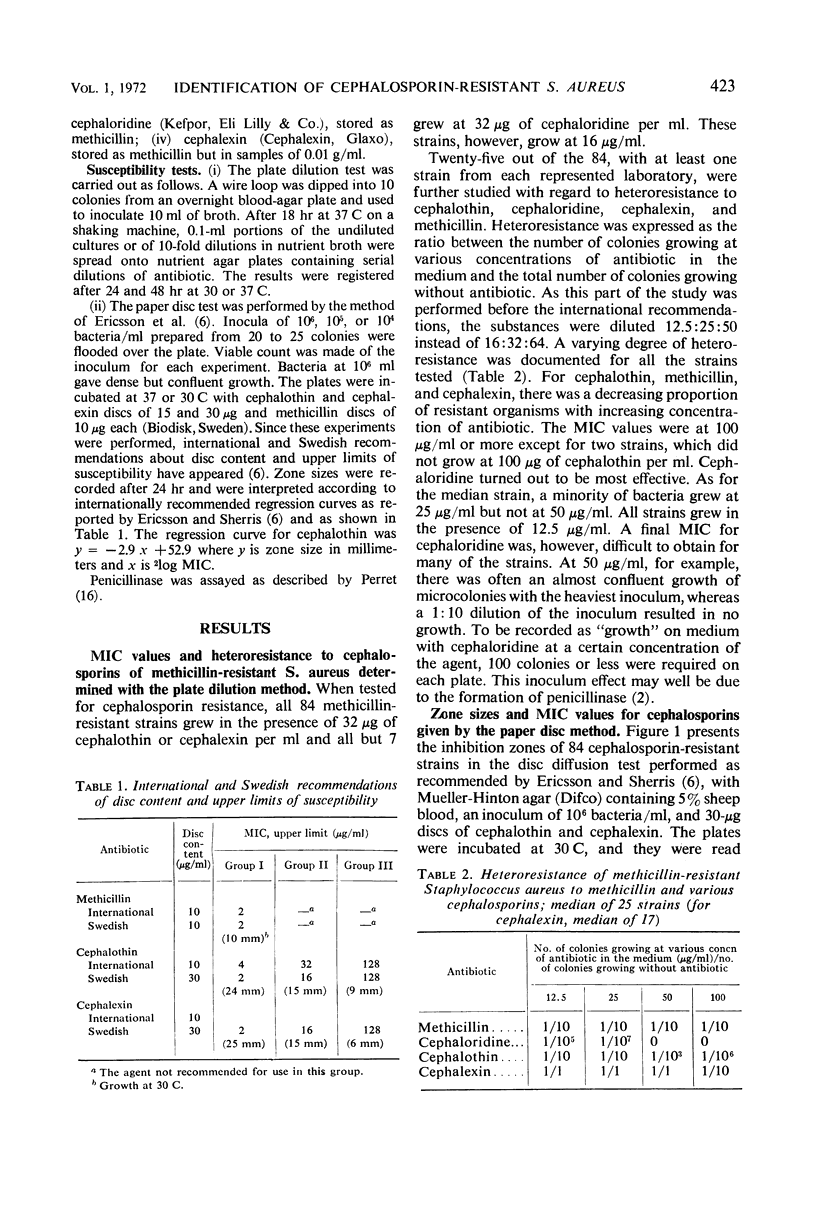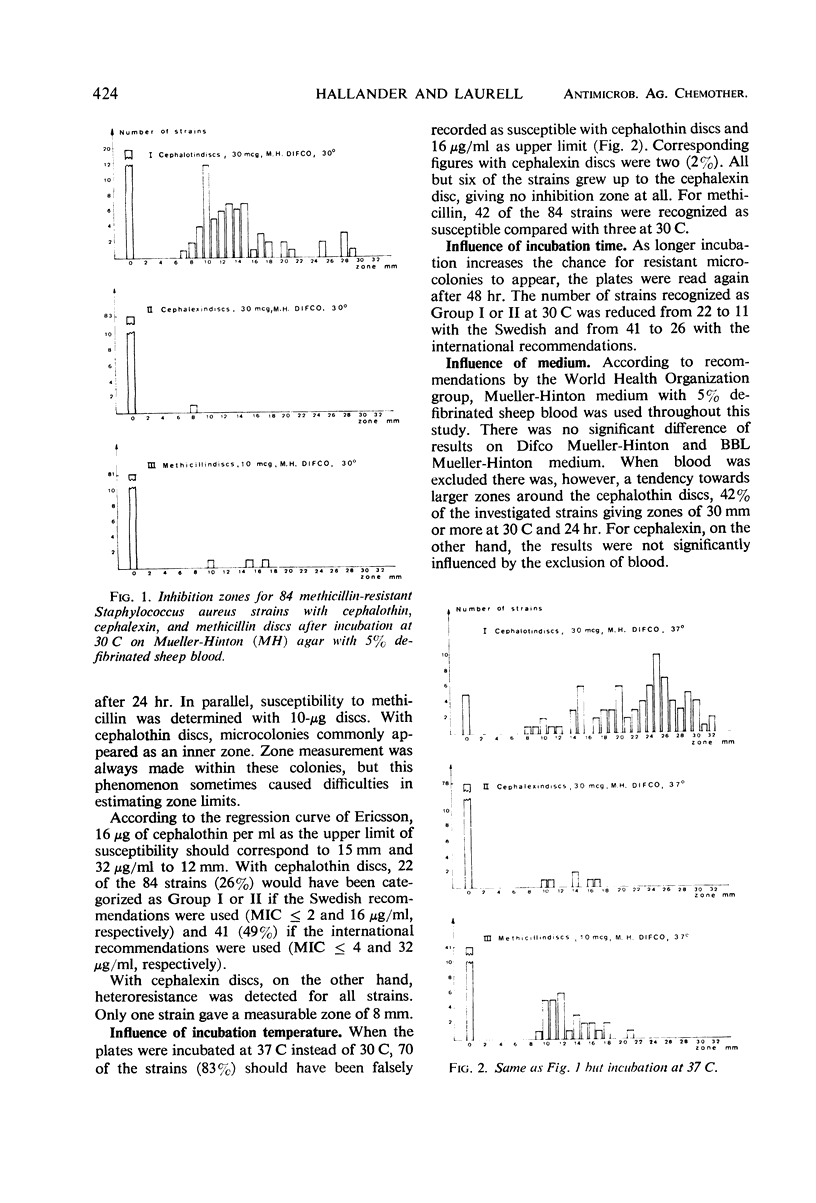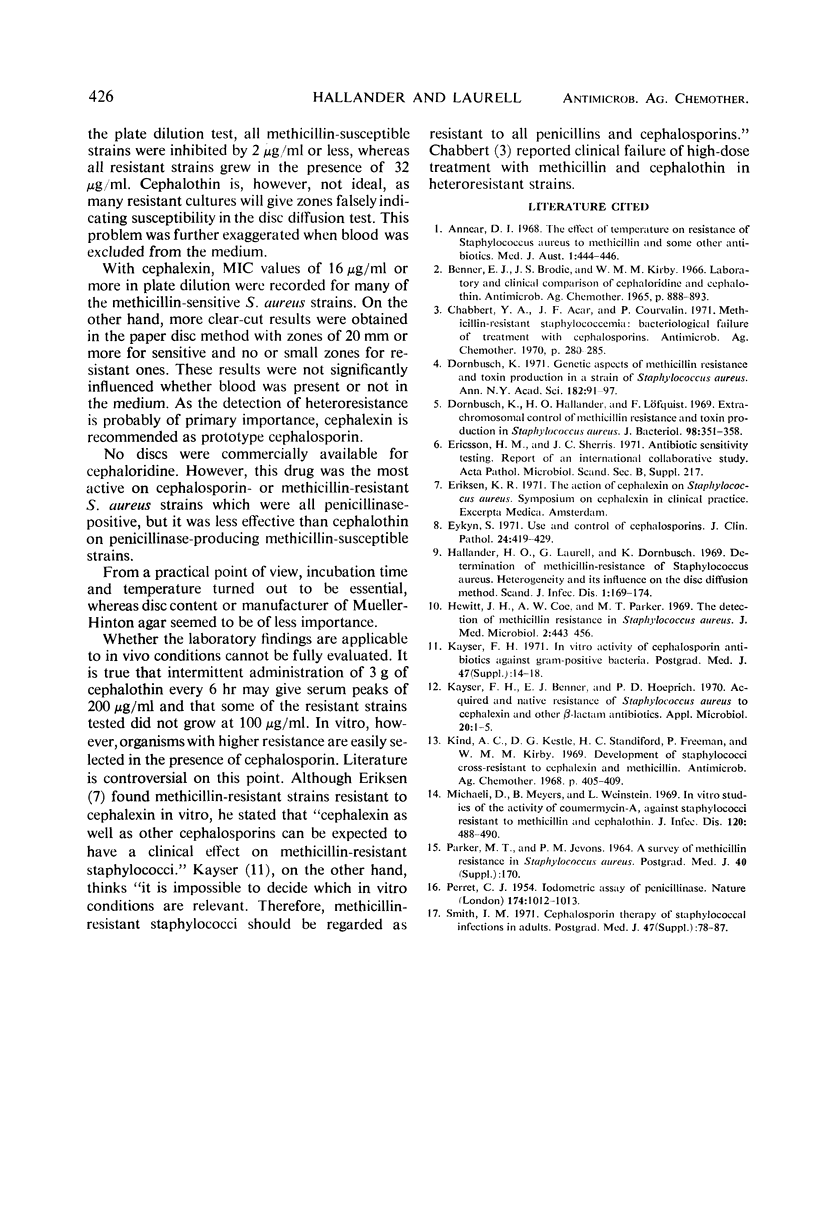Abstract
Methicillin-resistant strains of Staphylococcus aureus, in total 84, representing 16 laboratories in 8 different countries were all resistant to 32 μg of cephalothin per ml with the same typical heteroresistant pattern. With the disc diffusion method, they were easily detected when cephalexin discs were used. With cephalothin discs, on the other hand, 26 to 49% would have been falsely categorized as Group I or II after 24 hr. It is recommended that susceptibility testing of S. aureus to cephalosporins by using the paper disc method be performed with 30-μg cephalexin discs on Mueller-Hinton agar without blood. With an inoculum of 106 bacteria/ml, an incubation temperature of 30 C, and an incubation time of 24 hr, a zone of less than 10 mm indicates presumptive heteroresistance. This corresponds to the international recommendation with a minimal inhibitory concentration of 32 μg/ml as the upper limit of Group II.
Full text
PDF




Selected References
These references are in PubMed. This may not be the complete list of references from this article.
- Annear D. I. The effect of temperature on resistance of Staphylococcus aureus to methicillin and some other antibioics. Med J Aust. 1968 Mar 16;1(11):444–446. [PubMed] [Google Scholar]
- Benner E. J., Brodie J. S., Kirby W. M. Laboratory and clinical comparison of cephaloridine and cephalothin. Antimicrob Agents Chemother (Bethesda) 1965;5:888–893. [PubMed] [Google Scholar]
- Dornbusch K., Hallander H. O., Löfquist F. Extrachromosomal control of methicillin resistance and toxin production in Staphylococcus aureus. J Bacteriol. 1969 May;98(2):351–358. doi: 10.1128/jb.98.2.351-358.1969. [DOI] [PMC free article] [PubMed] [Google Scholar]
- Ericsson H. M., Sherris J. C. Antibiotic sensitivity testing. Report of an international collaborative study. Acta Pathol Microbiol Scand B Microbiol Immunol. 1971;217(Suppl):1+–1+. [PubMed] [Google Scholar]
- Eykyn S. Use and control of cephalosporins. J Clin Pathol. 1971 Jul;24(5):419–429. doi: 10.1136/jcp.24.5.419. [DOI] [PMC free article] [PubMed] [Google Scholar]
- Hallander H. O., Laurell G., Dornbusch K. Determination of methicillin resistance of Staphylococcus aureus. Heterogeneity and its influence on the disc diffusion method. Scand J Infect Dis. 1969;1(3):169–174. [PubMed] [Google Scholar]
- Kayser F. H. In vitro activity of cephalosporin antibiotics against Gram-positive bacteria. Postgrad Med J. 1971 Feb;47(Suppl):14–20. [PubMed] [Google Scholar]
- Kind A. C., Kestle D. G., Standiford H. C., Freeman P., Kirby W. M. Development of staphylococci cross-resistant to cephalexin and methicillin. Antimicrob Agents Chemother (Bethesda) 1968;8:405–409. [PubMed] [Google Scholar]
- Michaeli D., Meyers B., Weinstein L. In vitro studies of the activity of coumermycin-A1 against staphylococci resistant to methicillin and cephalothin. J Infect Dis. 1969 Oct;120(4):488–490. doi: 10.1093/infdis/120.4.488. [DOI] [PubMed] [Google Scholar]
- PERRET C. J. Iodometric assay of penicillinase. Nature. 1954 Nov 27;174(4439):1012–1013. doi: 10.1038/1741012a0. [DOI] [PubMed] [Google Scholar]
- Smith I. M. Cephalosporin therapy of staphylococcal infections in adults. A review of the literature and a report of 501 treated patients. Postgrad Med J. 1971 Feb;47(Suppl):78–87. [PubMed] [Google Scholar]


